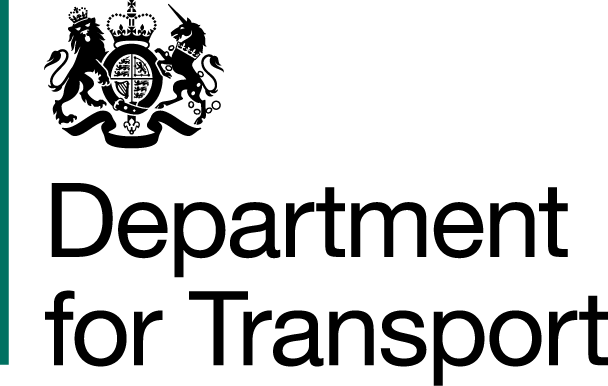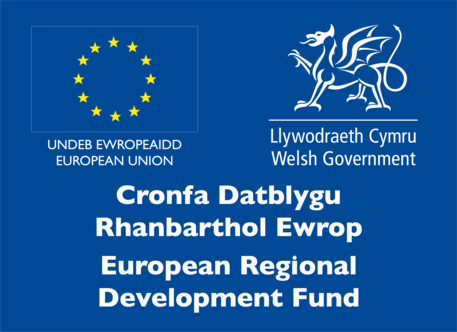The Biodiversity and Resilience of Ecosystems Duty Report 2019
Introduction and Context
Transport for Wales (TfW) is a not-for-profit, customer-focused company, dedicated to driving the Welsh Government's aim of creating a transformed transport network. We will provide an efficient, high quality service whilst reducing the impact we have on our surrounding environment. Our Sustainable Development Plan has been built on the framework presented in the Well-being of Future Generations (Wales) Act 2015 and our vision is to ensure these guiding principles are entrenched in our operations.
As a pan-Wales organisation, we apply our local understanding for the benefit of our customers. As a trusted delivery partner of the Welsh Government, we engage with the Department for Transport in relation to parts of the Wales and Borders rail service running in England as well as Network Rail across all of Wales and the borders. TfW is also responsible for the development of the South Wales and North Wales Metros. Both will be multi-modal systems, integrating the heavy and light rail networks with local bus services, active travel and other modes of transport.
Over the next five years, TfW is undertaking works throughout Wales and the borders to develop and upgrade the network and we recognise that these operations may affect local biodiversity. Our Biodiversity Action Plan outlines our strategies to protect and restore the natural habitats around our service areas and how we plan to alleviate any damage caused by our operations. Under the Welsh Minister's Duty, TfW is required to report on our progress in line with section 6 of the Environment (Wales) Act 2016.
Key actions
Publish biodiversity action plan
Vegetation and habitat monitoring
Over £1 million in funding allocated to biodiversity projects
Phase 1 tree planting over nine hectares at Llanwern
Case Study: Llanwern Tree Planting
TfW has been commissioned by Welsh Government to deliver a Main Events Stabling Line (MESLl, which will be located adjacent to the Tata Steelworks service lines in Newport, Wales. The project forms part of a wider package of transport improvements and investment by TfW.
The project will be sub-divided into specific phases; Project MESL and Project Station.
The works associated Project MESL will result in the loss of secondary broadleaved woodland (wet woodland}, over approximately 2.9 hectares. This habitat is a priority habitat under Section 7 of the Environment (Wales} Act 2016, the woodland is in relatively poor condition in terms of structure and species diversity owing to a lack of management and encroachment by nonnative and invasive species.
We have agreed with Natural Resources Wales mitigation measures to replace all trees removed at a ratio of approximately 2 hectares planted for each hectare removed. An area of 20 hectares has been purchased by Welsh Government to accommodate the agreed mitigation measures for the scheme, indicated in Figure 1 below.
Mitigation planting will begin in early 2020, prior to construction, which is due to commence late 2020, due to utilising planting seasons.
This initial phase, which will include planting of some 76,500 plants, will be introduced to the mitigation land. Around the edges of the site, planting will include a diverse mix of suitable for the site conditions to attract invertebrates. This will surround a native woodland core mix and will include Oak, Hazel, Willow, and Crab Apple trees, to name a few. As part of the project, around 100 dormice boxes will also be introduced to the area in surrounding woodland.
Areas for planting have been kept aside for future phases of the project. An operational maintenance and replacement budget have been set aside for this project over the next 30 years.
Case Study: Vegetation Management
The transformation project of the Core Valley Lines (CVU is will improve the existing transport infrastructure in and around South East Wales. It consists of upgrading 16 route sections and will include track renewals and the installation of electrified overhead power lines and foundations along the majority of track. In order to undertake this innovative transformation, we need to address several challenges.
Safety
Encroachment of lineside vegetation has led to significant disruption to rail services from train strikes to maintenance works being cancelled due to no access to safe walking routes.
Structural Integrity
Potential decline in the structural stability of bridges, embankments, retaining walls and fencing as a result of unmanaged vegetation growth. The presence of vegetation on many retaining structures prevents us from undertaking vital assessments.
Drainage
The presence of unmanaged vegetation creates blockages in open drainage channels and can lead to track bed inundation, or in some cases, washout.
Adhesion
Fallen leaves on the railway can greatly impact the adhesion on the line which can cause 'slipperiness' of the rail wheel.
Invasive Species
The management of invasive non-native species is a critical element of lineside management to reduce impact on infrastructure, services and our lineside neighbours.
Strategy
Our aim is to be able to fully account for all vegetation removed as part of the CVL Transformation project. We are undertaking thorough habitat and vegetation surveys along the length of the project lines to understand the challenges and opportunities to limit our impact and we will have due regard to conserve, restore and enhance biodiversity. We communicate with regulators including Natural Resources Wales and Local Authorities to ensure our activities are compliant.
Action Report
Nature recovery action plan objectives
Objective 1:
Requirement
Engage and support participation and understanding to embed biodiversity throughout decision making at all levels.
Key actions
Our Sustainable Development Plan identifies how we are aligning our operations with the Wellbeing of Future Generations Act Goals. We're committed to maintaining a biodiverse, natural environment in support of a more resilient Wales. To provide more detail, we have published our Biodiversity Action Plan which identifies the strategies we will take to ensure we are not only minimising our effects on, but also enhancing biodiversity now and in the future.
Objective 2:
Requirement
Safeguard species and habitats of principal importance and improve their management.
Key actions
To control the de-vegetation throughout development of our projects, we undertake environmental assessments prior to construction work and use an Environmental Risk Register to track risks and opportunities of our activities. We have route-wide protected species licences from Natural Resources Wales which require us to follow an agreed method while undertaking construction activities and to ensure no net loss of biodiversity.
We are committed to utilising the most robust metrics to monitor and account for habitat and vegetation management activities. We also work with Network Rail in their assessments along the remaining rail lines in Wales to ensure de-vegetation is limited and carried out responsibly.
Currently, we have assessed habitat suitability for key protected species for the entire core valleys network. Our team of ecologists are responsible for validating and 'ground truthing' woodlands, habitats and locations of known protected species. They use camera traps to monitor habitats of badgers and bat detectors to help us understand key foraging and commuting routes and the type of lighting we need to use so we don't interfere with natural patterns.
Objective 3:
Requirement
Increase the resilience of our natural environment by restoring degraded habitats and habitat creation.
Key actions
TfW has committed to replacing all trees removed as part of construction or maintenance, with all replanting within Wales. We have acquired 20 hectares of land in Llanwern to use for tree planting, which will begin in January 2020. During the initial project phase, we will introduce 76,500 new plants to 9 hectares of the area and 100 dormice boxes. Upon completion, the project will connect three existing woodlands in Llanwern to create a larger habitat area for native species and enhance biodiversity over time as the planted woodlands develop.
Objective 4:
Requirement
Tackle key pressures on species and habitats.
Key actions
We are carrying out ongoing treatment of invasive species along the CVL, including the treatment of Japanese Knotweed, Himalayan Balsam, and Cotoneaster. Our techniques include the physical removal. treatment and reuse/ disposal of plant material and soils, spraying or injecting with herbicide. All staff and groundwork subcontractors will be trained in identification and control.
TfW is addressing climate change and supporting Wales' goal of decarbonising our network. Our approach is outlined in our Low Carbon Impact Strategy. As part of this, we will improve local air pollution through electrification of the rail network and remove contamination at all CVL stations.
We are introducing rainwater harvesting to our Taff's Well depot and permeable surfaces which will reduce pollution levels in runoff to the environment. Our works will not cause damage to any Natura 2000 sites within our project scope areas.
We have committed £330,000 as part of a green infrastructure fund to support initiatives over the next five years through our Station Improvement Plan. This includes green roofing on bike shelters at 20 stations, green walls at six stations within urban areas, and green roads.
Objective 5:
Requirement
Improve our evidence, understanding and monitoring.
Key actions
As part of our biodiversity mapping and monitoring processes, we have a regular dialogue with SEWBReC to obtain the latest records of protected species to aid our own surveys of the infrastructure. We are also in regular discussions with Natural Resources Wales whom are a key partner in our effort to protect important habitats, minimise biodiversity loss and manage invasive non-native species.
We have a team of ecologists and aboriculturalistswho undertake vegetation and habitat mapping along the CVL and an arborist from Network Rail who advises along other lines in Wales. We work closely with environmental consultancies who have undertaken several ecology surveys along Welsh railway lines on our behalf. Our team maintains a good working relationship with Natural Resources Wales which ensures we are maximising our efforts to protect and enhance biodiversity in Wales.
Objective 6:
Requirement
Put in place a framework of governance and support for delivery.
Key actions
Our Senior Leadership Team and Board have endorsed our Sustainable Development Plan and Biodiversity Action Plan.
As part of our strategy, we will be partnering with environmental groups, charities and academics to encourage new and innovative ideas using our Biodiversity Initiative Fund to help in this preservation. By drawing on skills across the industry, we are contributing to the long-term sustainability of Wales, it's environment and our communities. We have committed £17,000 to the fund which will be employed by this group to implement biodiversity-enhancing initiatives around the network and across station property. This could include introducing bee friendly plants, beehives, and bird and bat boxes to station areas.
We have a station adoption scheme in which local people can adopt an unmanned station in order to keep it clean and pleasant. As part of this, station adopters are encouraged to introduce floral displays or maintain station gardens. Currently, there are 159 stations that have been adopted across Wales and 53 which are available for adoption.



